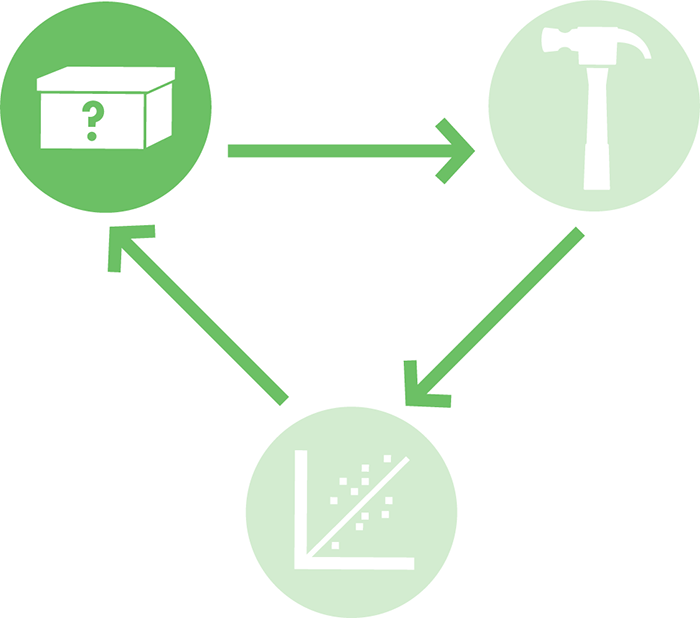Chapter 8. Picture This

BioBuilder’s Picture This activity emphasizes the “design” phase of the design-build-test cycle. Picture This uses a system developed by a 2004 International Genetically Engineered Machines (iGEM) team that changes E. coli’s sensitivity to light, making the strain useful for “bacterial photography.” The team modified the cells to be both light-sensitive and color-producing, and it connected these genetic functions to each other (Figure 8-1). A lawn composed of these cells is able to reproduce an image printed on a mask by acting as photographic pixels, turning the cells’ color-generating genetic circuitry “on” in the dark or “off” in the light.
It took a lot of trial and error as well as a healthy dose of good luck for the iGEM team to successfully design and build the sophisticated genetic circuit that produced this photographic behavior. In the future, as synthetic biologists design even more sophisticated or complex living systems, they will need to rely on a crucial tool that other engineering disciplines have at their disposal: mathematical and physical modeling. When reliable modeling tools are available, synthetic biologists will be able to conduct computational simulations and experiments to test their systems before they begin working with the actual cells and DNA. Instead of starting a project by building the living system, they’ll gather information ...
Get BioBuilder now with the O’Reilly learning platform.
O’Reilly members experience books, live events, courses curated by job role, and more from O’Reilly and nearly 200 top publishers.

